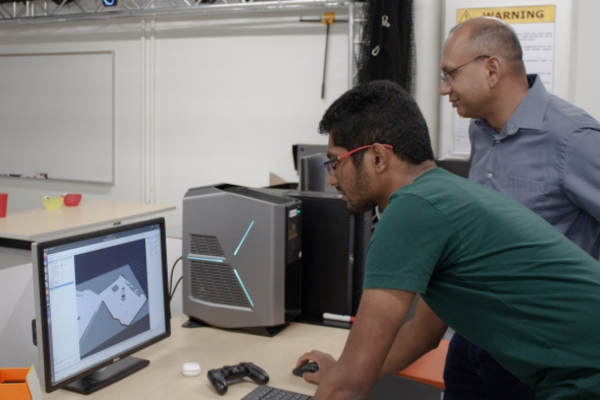Researchers advance robotics with new AI toolkit
The AI toolkit incorporated advanced algorithms that allowed robots to learn from their experiences, create reusable actions, and formulate new plans for complex tasks.
 Srivastava (right) and Nagpal observe Alfred’s efforts to plan the route it will take to successfully clear dishes off a table without any programming done in advance about the working area. / Image- ASU News
Srivastava (right) and Nagpal observe Alfred’s efforts to plan the route it will take to successfully clear dishes off a table without any programming done in advance about the working area. / Image- ASU News
Indian-origin researcher at Arizona State University (ASU) is spearheading progress in robotics with the development of an AI toolkit designed to enable robots to perform tasks that are “dirty, dull, or dangerous.”
The project, led by Siddharth Srivastava, an associate professor of computer science and engineering, aims to equip robots with the ability to autonomously learn and execute complex tasks.
Srivastava, an alumnus of the Indian Institute of Technology (IIT) Kanpur, creates AI solutions that would make robots more adaptable and easier to deploy across various industries. “Our goal was to empower robots to handle high-level tasks on their own,” he explained.
Jayesh Nagpal, a doctoral student under Srivastava's guidance, played a crucial role in the research. Nagpal, who completed his Bachelor of Technology in Mechanical Engineering from Maharaja Agrasen Institute of Technology in Delhi, was responsible for calibrating Alfred, a Fetch mobile manipulator robot that served as the primary platform for testing the team’s innovations.
The AI toolkit, funded by multiple grants from the National Science Foundation, incorporated advanced algorithms that allowed robots to learn from their experiences, create reusable actions, and formulate new plans for complex tasks. These capabilities significantly reduced the need for manual programming, which had been a major obstacle to the widespread adoption of robots in sectors such as healthcare, manufacturing, and disaster recovery.
Nagpal’s work with Alfred demonstrated the practical applications of the AI toolkit. “We trained Alfred to clear dishes after a meal by showing him how to pick up and place down objects,” Nagpal said. “Using the new algorithms, Alfred was able to autonomously determine the best route to take, how to move its arms, and where to place the dishes without any pre-programmed instructions.”
Srivastava highlighted the broader implications of the research, noting that the ability for robots to operate independently in unpredictable environments could revolutionize industries that rely on automation.
“This technology has the potential to improve hospital operations, assist in disaster recovery, and even handle tasks in environments that are hazardous to humans,” he stated.
.png)





.jpg)
.jpg)
.jpg)
.jpg)


.jpg)
.jpg)

.jpg)

.jpg)

Comments
Start the conversation
Become a member of New India Abroad to start commenting.
Sign Up Now
Already have an account? Login